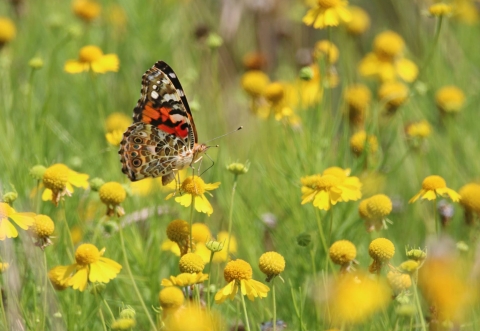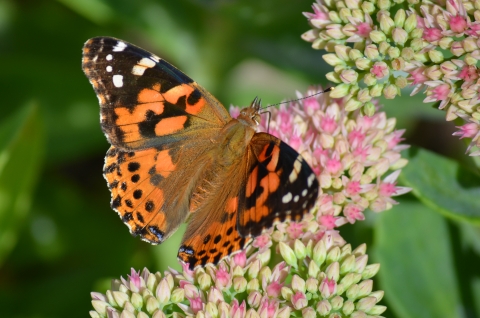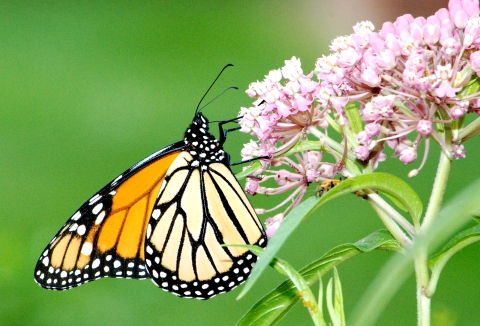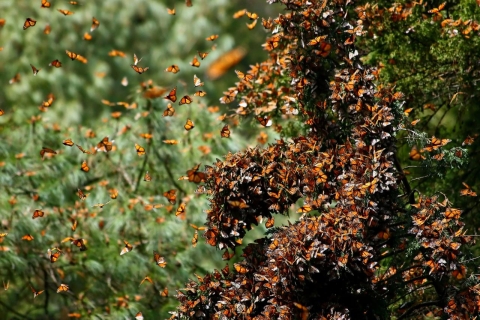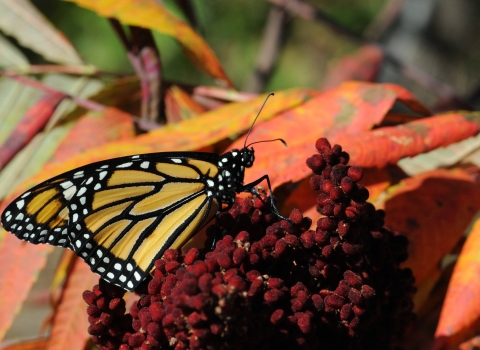With more than 700 butterfly species found in North America, getting a proper identification can be tricky! Right now many butterflies are on the move and some sightings have been so plentiful it’s hard to keep count. While monarchs are famous for their lengthy migration, not all butterflies you see this fall will be monarchs. Join us and learn how to identify two widespread species you may spot this fall.
Painted lady
The painted lady butterfly can be found throughout most of North America. This widespread and versatile species has more than 100 plants that can host the caterpillar phase. While their color scheme may be similar to monarch butterflies, painted ladies have eyespots on the underside their wings in addition to brown coloring on both sides. Painted ladies lack the vein pattern that monarchs are best known for. Painted ladies are also smaller than monarchs, with a wingspan measuring less than 3 inches.
Thanks to favorable temperatures, we’ve seen a huge influx of painted lady butterflies this fall. Some observers have spotted more than 100 painted ladies in a single garden! While this species can be found year round in the south, it can’t survive the cold winters in northern states — and that’s where migration comes in! Migration patterns for painted ladies tend to be erratic and irregular. Generally speaking, in the spring painted ladies migrate north and in the fall they migrate south, but these movements aren’t always predictable.
Monarch
The monarch butterfly can be found throughout most of North America. While monarchs can be found across a wide geographic area, they are not as versatile as many other species. Unlike the painted lady, monarch caterpillars have very specific host plant requirements — caterpillars will only eat milkweed. Monarchs can be identified by orange wings with black veins and white spots. Larger than painted ladies, their wingspan typically measures 3.5–4 inches.
Monarch butterflies in the north make an impressive fall migration, with some butterflies traveling more than 3,000 miles! Caterpillar food choice isn’t the only area that monarchs are particular. Monarch butterflies have very specific wintering habitat needs. While some monarchs populations overwinter in parts of California and Florida, all Eastern population monarch butterflies travel to a region in Mexico that is only 73 miles wide. In this wintering habitat, monarch butterflies cluster together tightly, with some tree branches containing more than 15,000 butterflies!
Next time you spot a butterfly, look closely and use what you’ve learned to see if you can positively identify the species.

